The Growing Trend of Solo Travel [2023 Study]
June 14, 2023 /

The idea of solo travel is catching on.
Exploding Topics data shows the number of global searches for this term is up +111% over the last two years.
So—
At ePassportPhoto, we've decided to poll 850+ Americans who’ve traveled alone and get their take on the matter.
Keep scrolling to see our findings.
We crave independence.
A chance to explore the world on our terms from the moment we take our first steps.
But—
When do we actually take the leap and engage in solo travel?
Let's have a look at the data:
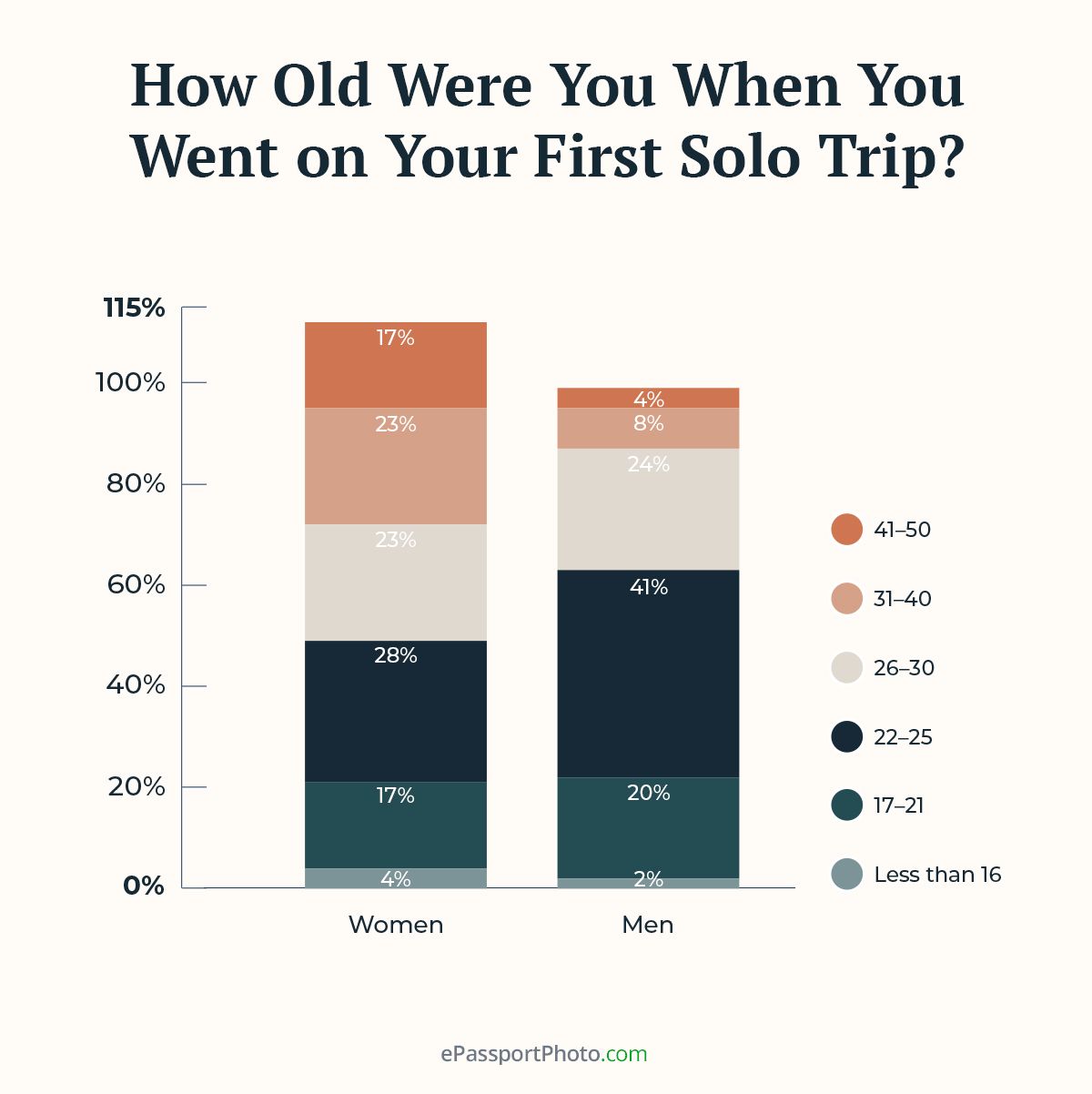
It turns out most people (61%) first travel alone between the ages of 22 and 30. A few brave souls start earlier, while others take longer to gain the courage to venture out without friends or family.
Now—
As far as a destination is concerned, Americans usually stay domestic (41%) for their first solo trip. Yet, there's still substantial interest in international travel and a combination of the two.
Have a look:
| What Was the Destination of Your First Solo Trip? | Share |
| Domestic | 41% |
| International | 30% |
| Both | 29% |
Moving on, we asked respondents how long they stayed at their destination.
The results are in:
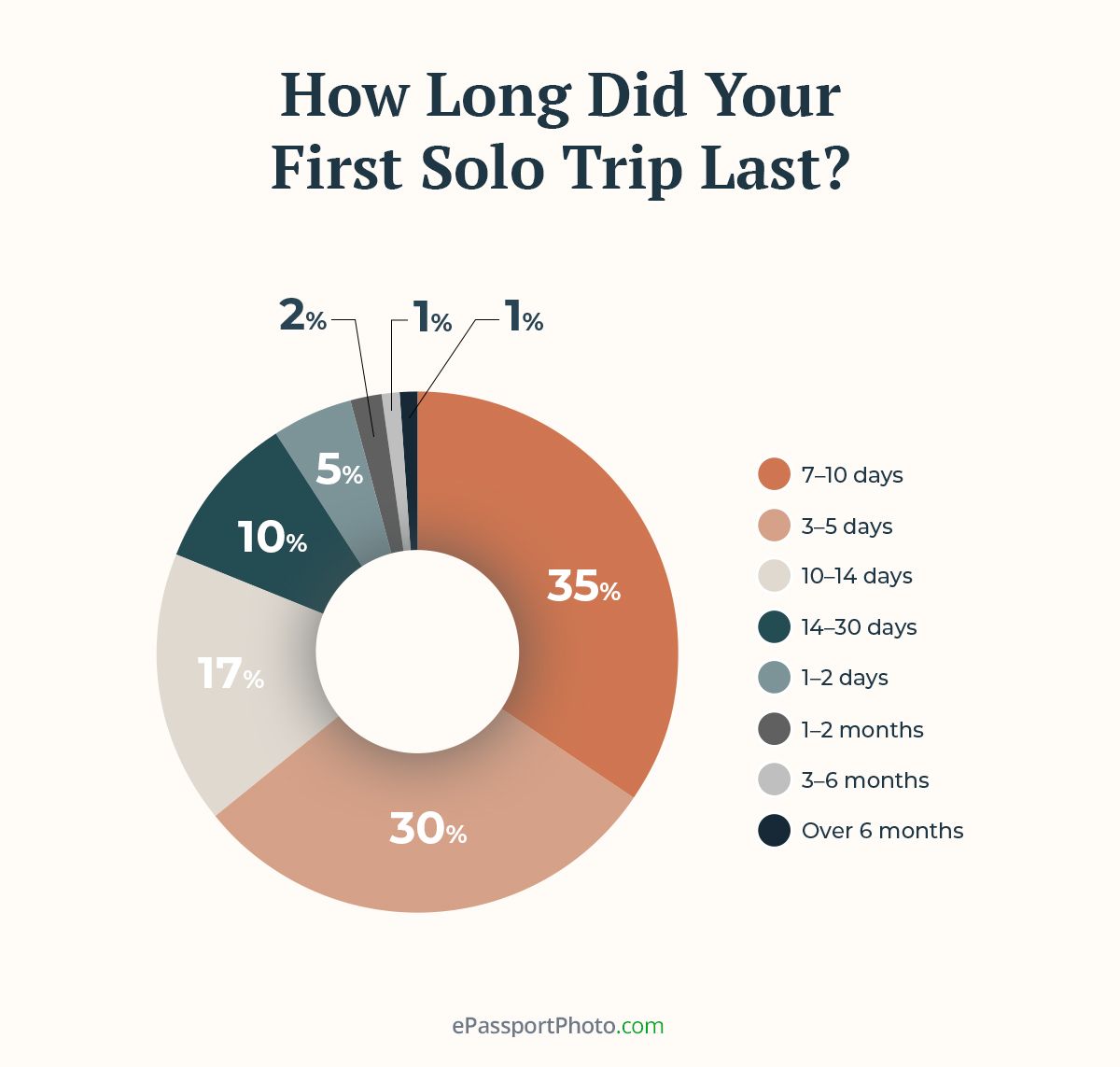
As you can see, 7–10 days is the most popular length for a first solo trip, with 35% of pollees selecting this option.
That should be enough time to take in the sights of one or two places and return with a few good stories.
Let's talk numbers:
Based on NerdWallet's Travel Price Index, the total expenses associated with traveling have increased by 9% in the last year.
So—
It's not surprising that the majority of respondents in our study (48%) indicated they usually spend between $1,000 and $2,000 per solo trip:
| How Much Money Do You Usually Spend on a Solo Trip? | Share |
| $1,000–2,000 | 48% |
| $500–1,000 | 24% |
| $2,000–5,000 | 19% |
| $100–500 | 5% |
| More than $5,000 | 4% |
Here's where this money goes:
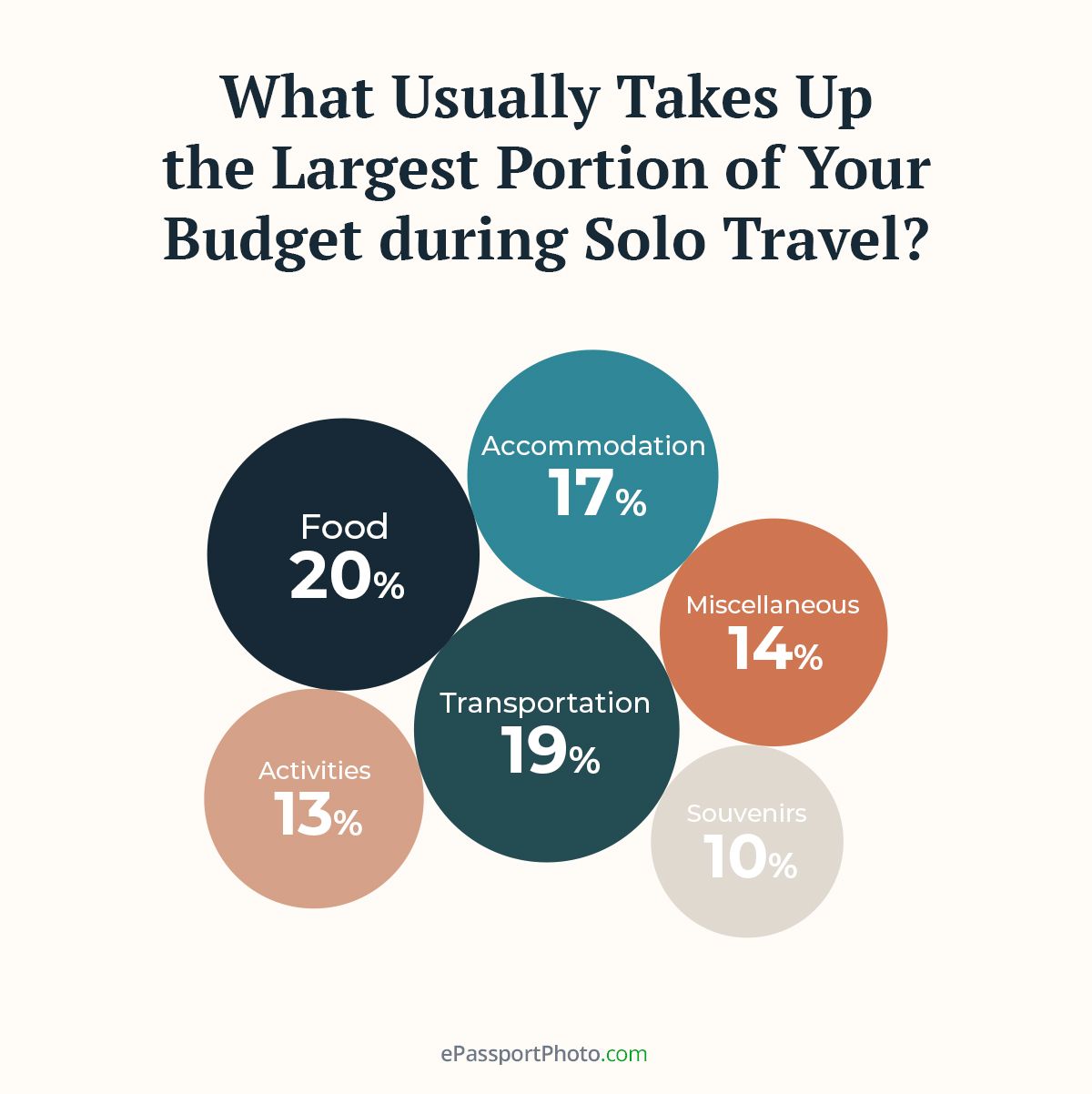
As you can see, most solo travelers spend their budget on food (20%), transportation (19%), and accommodation (17%).
So if you're frugal, try to find more affordable options in these categories.
So far, so good.
We've learned that lodging is among solo travelers' biggest expenses. Now let's examine where they usually stay.
See the results below:
| Which Lodging Options Do You Typically Choose When Going Solo? | Share |
| Hotel | 16.74% |
| Hostel | 11.28% |
| Vacation rental | 11.16% |
| Mountain lodge | 10.58% |
| Guest house | 10.35% |
| Motel | 10.23% |
| Cottage | 9.53% |
| My own (e.g., a tent) | 8.26% |
| Couchsurfing | 8.02% |
The data shows that hotel stays are the top choice for most solo travelers (16.74%). Hostels and vacation rentals follow, with 11.28% and 11.16%, respectively.
Indeed.
Hotels offer an unmatched sense of security (and comfort), which is precisely what solo travelers need, according to our further findings.
Take a look:
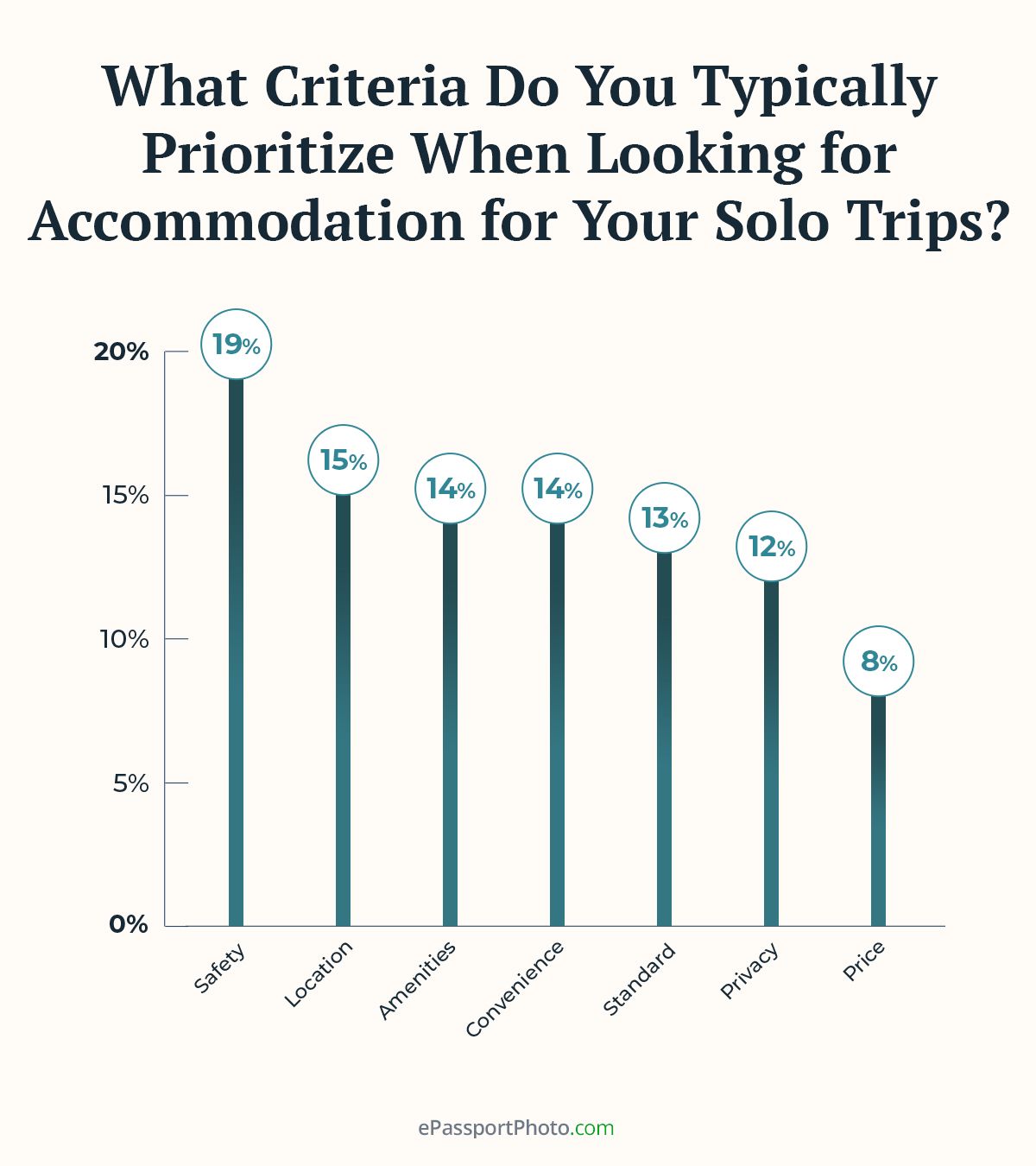
That wraps up this section.
What would be your preferred destination if you were to travel independently?
A city break in Barcelona? A beach holiday in Bali? An adventure in the Amazon rainforest?
We gave this question to our respondents.
Let's find out what they said:
| Which Destinations Do You Prefer for Solo Travel? | Share |
| Mountains | 18.26% |
| Iconic cities (e.g., Paris) | 14.19% |
| Wilderness areas (e.g., Denali National Park and Preserve) | 13.84% |
| Cultural/historical heritage areas (e.g., Acropolis of Athens) | 13.72% |
| Sites known for nightlife and entertainment | 13.26% |
| Coasts/beaches | 10.93% |
| Places suitable for sports activities | 10.58% |
The data reveals that mountains are the most popular destination (18.26%) among solo travelers.
That may be because they offer the perfect balance between adventure and relaxation.
Wouldn’t you agree?
Like anything else, solo travel has its highs and lows.
When it comes to the biggest challenges of this type of travel, survey respondents pointed to trip planning (15.47%), higher expenses (13.95%), and having to stay extra cautious (13.49%) as their top concerns.
Here's what they’re followed by:
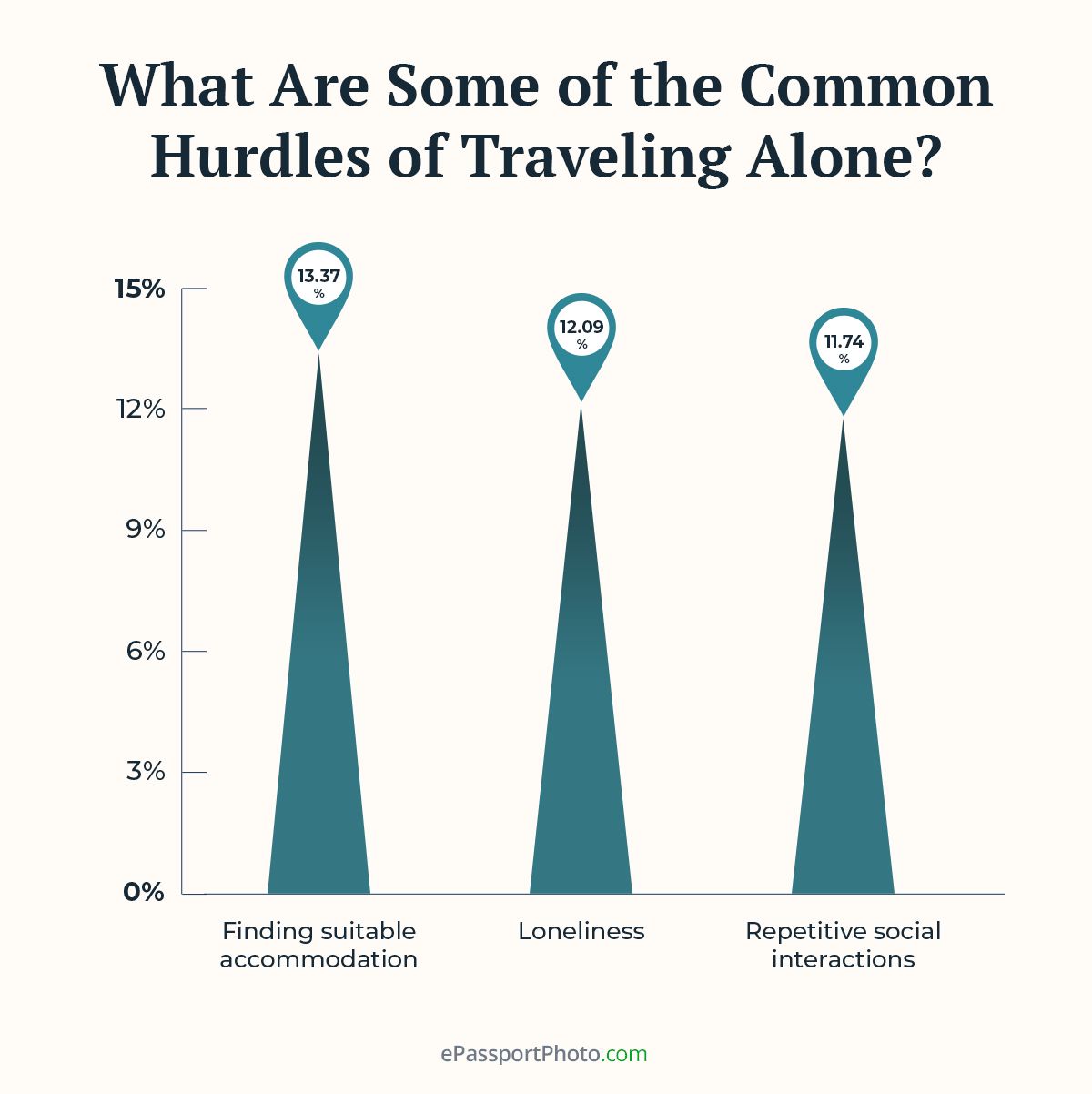
Plus—
Don't forget about safety, which is solo travel's Achilles heel:
| What’s Your Biggest Safety Concern When Traveling Solo? | Share |
| Mugging | 14.77% |
| Road accidents | 13.84% |
| Scams | 12.56% |
| Pickpocketing | 11.74% |
| Getting lost | 11.51% |
| Dangerous animals or insects | 10.47% |
| Diseases | 9.07% |
But—
Regardless of the risks, solo travel gives the ultimate freedom to craft your itinerary, explore uncharted territories, and create unforgettable memories on your own terms.
So it's no wonder that when asked if they plan a solo trip in the next 12 months, 91% of respondents answered "Yes."
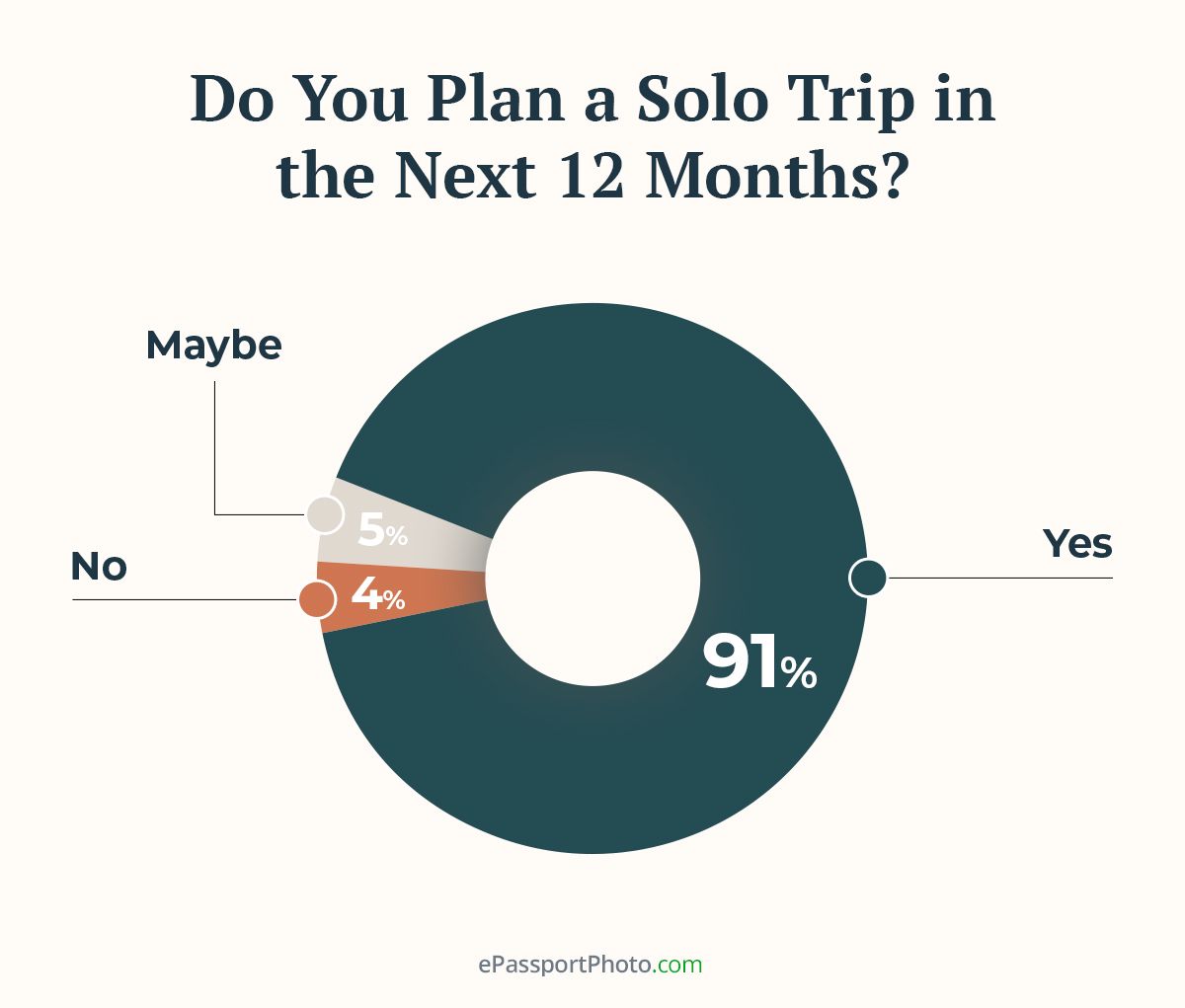
That speaks volumes!
We conducted an online survey of 860 US respondents who’d traveled solo at least once via a bespoke online polling tool in March 2023.
The respondents were 77.4% male, 22.2% female, and 0.3% identified as other. 4.3% of respondents were 26 or younger, 64.2% were aged 27–35, 19.1% were 36–42, 11.4% were aged 43–58, and 1% were 59 or older.
This survey has a confidence level of 95% and a margin of error of 3%. Given the gender and age makeup of our sample size, the study’s findings are statistically significant for the population at large.
This study was created through multiple research steps, crowdsourcing, and surveying. Data scientists reviewed all survey participants' responses for quality control. The survey also had an attention-check question.
Did our findings help you learn more about solo travel? If you believe your audience will be interested in this information, feel free to share it. Just remember to mention the source and link back to this page.